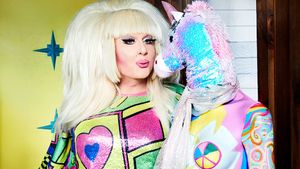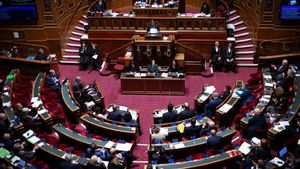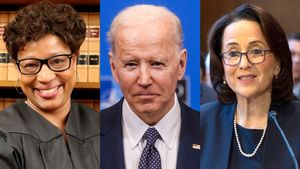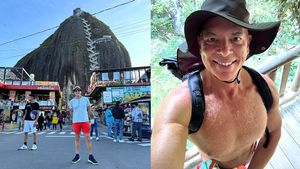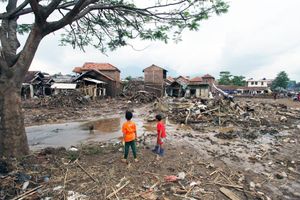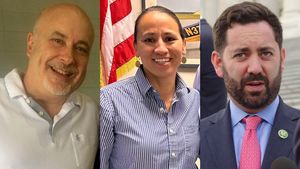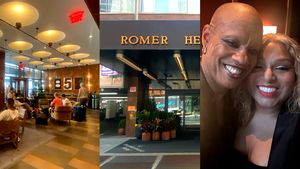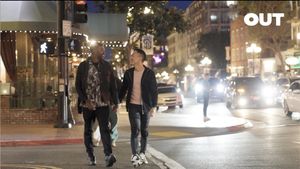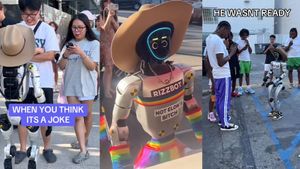Treatment GuideJust DiagnosedSex & DatingAfrican AmericanStigmaAsk the HIV DocPrEP En EspañolNewsVoicesPrint IssueVideoOut 100
CONTACTCAREER OPPORTUNITIESADVERTISE WITH USPRIVACY POLICYPRIVACY PREFERENCESTERMS OF USELEGAL NOTICE
© 2025 Pride Publishing Inc.
All Rights reserved
All Rights reserved
Scroll To Top
By continuing to use our site, you agree to our Privacy Policy and Terms of Use.
The rate of HIV infection among young Latinos is a serious problem, but raising this population's awareness about the disease doesn't have to be dull and downbeat. 'Our mode of outreach has to be very fun and engaging,' says Dianna Manjarrez, program coordinator for Generation L, a HIV awareness and prevention campaign run by the Vida/SIDA project of Chicago's Puerto Rican Cultural Center. Launched last December with a five-year grant from the Centers for Disease Control and Prevention, Generation L seeks to spread the safer-sex message with events held at nightclubs, in conjunction with drag pageants at colleges and universities, and in other fun venues throughout the city. Its primary target is gay, bisexual, and transgender Latinos aged 18 to 24. 'There's a need for a program' for these youths, says Manjarrez, and the numbers back her up: Figures from the CDC indicate that the rate of new HIV infections among Latinos is 2.5 times the rate among whites. Men who have sex with men represent the majority of the new diagnoses among Latinos, and within the population of Latino MSM, the largest number of diagnoses is among those under 30. Some observers attribute HIV's disproportionate impact on Latinos partly to this population's discomfort in discussing sex and sexuality. Generation L aims to make such conversations more comfortable with its distribution of safer-sex information at recreational events as well as business-and-pleasure mixers like the Loud & Proud event held during Pride season, which offered speakers and workshops on how to avoid HIV, along with free food and raffles for iPods. Generation L also invites interested youths to attend periodic meetings where safer-sex issues are discussed, has a drop-in space available throughout the week, and encourages participants to do informal outreach to friends and family members to help them make healthy decisions. So far, Manjarrez estimates, the various components of the program have reached 300 people'and that's just the beginning.
From our Sponsors
Most Popular
Lexi Love comes out as HIV+ after Trump deletes federal resources
January 23 2025 11:23 AM
Grindr is reminding us why jockstraps are so sexy and iconic
May 02 2025 5:36 PM
BREAKING NEWS: Trump admin moves to end federal HIV prevention programs
March 18 2025 6:10 PM
Trump's orders prompt CDC to erase HIV resources
January 31 2025 5:29 PM
Celebrating Black History Month with our annual African American issue
February 01 2025 3:28 PM
Tyler TerMeer vows to continue to fight for health care for all
January 28 2025 3:00 PM
Discover the power of Wellness in your life
March 26 2025 12:41 PM
Plus: Featured Video
Latest Stories
Dancer. Healer. Survivor. DéShaun Armbrister is all of the above
July 02 2025 8:23 PM
Two right-wing Supreme Court justices signal they may uphold access to PrEP and more
April 21 2025 4:10 PM
Broadway's best raise over $1 million for LGBTQ+ and HIV causes
April 03 2025 7:15 PM
Plus nominated for 2025 GLAAD Media Award
January 22 2025 12:42 PM
'RuPaul's Drag Race' star Trinity K Bonet quietly comes out trans
December 15 2024 6:27 PM
AIDS Memorial Quilt displayed at White House for the first time
December 02 2024 1:21 PM
BREAKING: Supreme Court rules to save free access to preventive care, including PrEP
June 27 2025 10:32 AM
1985: the year the AIDS crisis finally broke through the silence
June 26 2025 11:24 AM
Trump admin guts $258 million in funding for HIV vaccine research
June 03 2025 3:47 PM
500,000 Children at Risk: PEPFAR Funding Crisis
April 08 2025 3:51 PM
The Talk Season 5 premieres this spring with HIV guidance for the newly diagnosed
March 26 2025 1:00 PM
Jess King is here to help you live your happiest, healthiest life yet
March 24 2025 4:35 PM
A camp for HIV-positive kids is for sale. Here's why its founder is celebrating
January 02 2025 12:21 PM
VIDEO: A man living with HIV discusses his journey to fatherhood
June 10 2025 4:58 PM
HRC holds 'die-in' to protest Trump health care cuts
April 28 2025 2:11 PM
Season 4 of The Switch on resilience & radical self-love returns this spring
March 26 2025 12:20 PM
Gerald Garth is keeping people of color happy and healthy through trying times
March 11 2025 3:38 PM
This long-term HIV survivor says testosterone therapy helped save his life.
December 16 2024 8:00 PM
Ricky Martin delivers showstopping performance for 2024 World AIDS Day
December 05 2024 12:08 PM

































